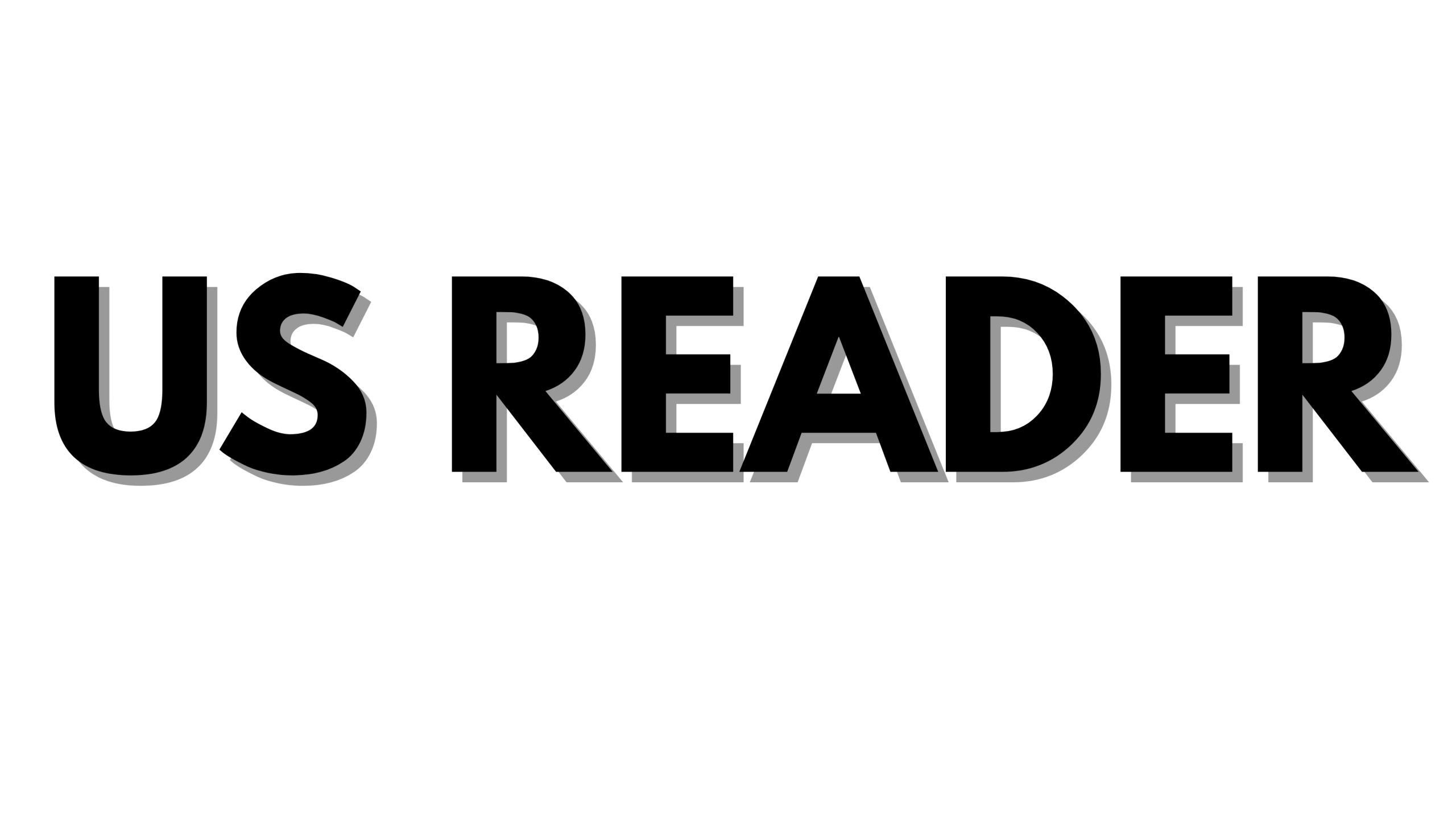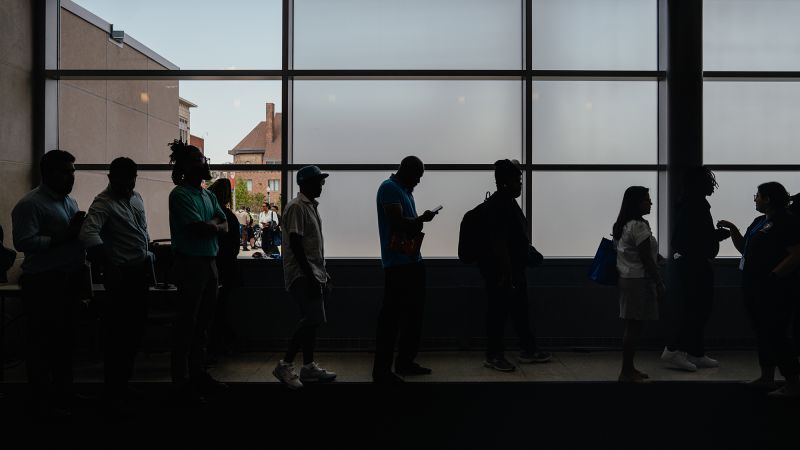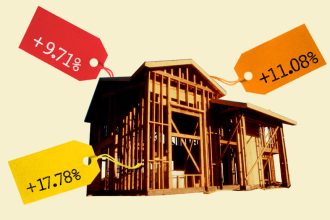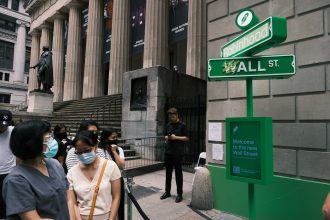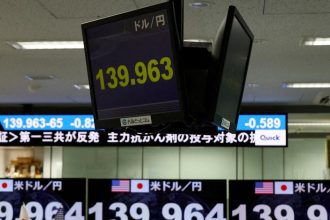The initial months of President Donald Trump’s second term have seen significant policy changes, including sweeping tariffs, increased deportations, reductions in federal spending, and layoffs across government sectors, all of which could transform the U.S. economy and its position in the global market. While the full effects of these policies may not yet be visible in economic indicators, early repercussions are already apparent.
In a surprising turn, the U.S. private sector reported job losses for June, according to data released Wednesday by payroll provider ADP. An estimated 33,000 jobs were lost, marking the first decline in over two years. This reading starkly contrasted with economists’ expectations, who had forecast a net addition of 115,000 jobs, as reported by FactSet. The decline in employment was primarily attributed to scaled-back hiring efforts, explained Nela Richardson, ADP’s chief economist. “Though layoffs continue to be rare, a hesitancy to hire and a reluctance to replace departing workers led to job losses last month,” she stated. “Still, the slowdown in hiring has yet to disrupt pay growth.”
ADP’s figures do not always align with the official federal jobs report, as evidenced when its March reading was adjusted down to a loss of 53,000 jobs, while the official report indicated a net gain of 48,000 private-sector jobs within an overall addition of 85,000 jobs, attributed largely to local and state government hiring. Nonetheless, ADP’s numbers often serve as an indicator of broader trends in hiring and wage increases. Notably, March marked one of the slowest growth periods since December 2020.
As the Department of Labor prepares to release its employment data on Thursday at 8:30 a.m. ET, economists predict the report will reveal the addition of 115,000 jobs in June, down from the previous estimate of 139,000 for May, also according to FactSet. Additionally, analysts expect the unemployment rate to climb by 0.1 percentage points to 4.3%, the highest level since October 2021.
The recent ADP figures suggest a worrying trend, being the first negative reading since March 2023. Abiel Reinhart, an economist at JPMorgan, noted that this drop is significant as it marks the first negative reading in the past few years. He pointed out that the average discrepancy between ADP numbers and those from the Bureau of Labor Statistics (BLS) has been about 75,000 recently. “But the bigger story here beyond the month-to-month forecasting performance of ADP is that the series is clearly weakening, and this has been occurring quite steadily since the start of the year,” he remarked in a note to investors.
Despite the gloomy ADP report, some economists remain optimistic about the upcoming BLS report. Economists from Pantheon Macroeconomics anticipate a net gain of 100,000 jobs in the private sector, which they believe will likely be sufficient for the Federal Reserve to keep interest rates unchanged at their next meeting. Pantheon’s analysts expressed skepticism regarding ADP’s reported job losses, particularly 52,000 in the healthcare and education sectors—areas that have typically seen consistent job growth.
However, forecasts for these sectors could be tempered. Factors such as seasonal hiring slowdowns and reductions in federal spending might indicate a less fruitful month for job creation. This sentiment was echoed by Bank of America economists, who suggested that weaker hiring trends might persist through the summer.
The negative employment figures have influenced market expectations, with the likelihood of a rate cut by the Federal Reserve for July rising to 25%, up from 21%, based on CME Group’s FedWatch Tool.
While economic changes typically manifest slowly in labor statistics, Ron Hetrick, a senior labor economist at Lightcast, cautioned that job growth is stagnating. “We were starting to see some excitement toward the end of last year,” he said, reflecting on hiring signals from IT staffing firms. “When the uncertainty entered in… the Fed got nervous about changing rates, and you just saw all of that retracted overnight.”
Hetrick elaborated on the distinction between true economic decline and a cautious hiring climate influenced by uncertainty. “I don’t believe we have a weak labor market because the economy is poor. I think we have a weak labor market because companies don’t feel good.”
The potential for continued labor market weakness raises concerns about its resilience to future economic shocks, according to Elizabeth Renter, a senior economist at NerdWallet. “It will be months or even years before we see the full effects of tariffs, federal cuts, and immigration policies in the labor market, but if we continue to see increasing weakness, these things may have a more resounding impact.”
The unemployment rate, a key economic indicator, is increasingly seen as a misleading metric in light of immigration shifts. Hetrick noted, “Unemployment is still low, but we’ve got to watch how we get to that unemployment number. If you’re doing it because your labor force is shrinking, you’re not doing it through strength.”
Research from Wells Fargo highlighted that foreign-born workers have been crucial to labor force growth since early 2020. Recent immigration restrictions could lead to a smaller labor force, which economists argue may distort perceptions of labor market health.
As both the private sector and overall hiring trends demonstrate caution, the latest figures from Challenger, Gray & Christmas indicated a 49% decline in announced layoffs in June compared to May, and a 2% decrease year over year, signaling that employers are holding onto their workforce. However, year-to-date layoff announcements are at their highest rate since the pandemic, with significant contributions from mass layoffs linked to the Trump administration’s initiative.
While the federal government workforce has seen gradual reductions over time, it constitutes only a small fraction of total employment. Recent BLS data showed a loss of 56,000 federal government jobs through May. Conversely, jobless claims data remains near four-year highs, suggesting ongoing challenges for job seekers in a competitive market.
Daniel Zhao, an economist at Glassdoor, cautioned about the confluence of various economic challenges, stating, “A bevy of other headwinds are accumulating including federal layoffs and funding cuts, slowing immigration and revocation of TPS work authorization, high interest rates, and more. While each alone would be too small to cause a recession, the combination of headwinds risks decelerating the job market just before the full weight of the tariff shock arrives.”


